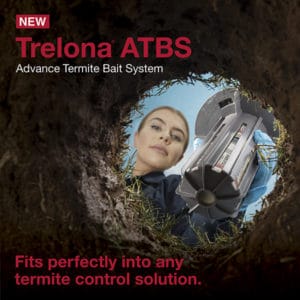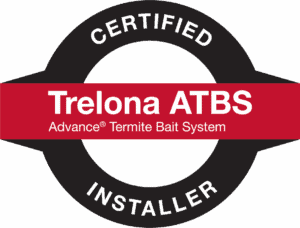Go Pest Hotline: (03) 5448 3407
Termite Baits
Termite baits are a smart and effective way to control termites.
Termite baits can be used to eliminate active termites from buildings and complete termite baiting systems placed in the ground around the perimeter of the building can be used to provide protection from future termite attack.
They are a great alternative to soil applied termiticides and indeed in situations where liquids cannot be applied to the soil, termite baiting systems are the only way to protect your home.
Why choose termite baiting system to protect your home?
Liquid soil treatments are a great way to protect your home. However, whereas liquid soil treatments form a treated zone around your home to prevent termite entry, termite baiting systems actually kill the termite nest, reducing the termite pressure on your home.
In addition, there are certain situations where termite baiting systems are preferred to liquid soil treatments:
- Certain soil types are not suitable for liquid soil treatments
- Baiting systems are ideal for sloping blocks or areas prone to flooding, where a liquid treatment may not stay in place
- In situations where there are environment concerns, termite baits are a great option as there is no chemical sprayed into the environment and the termite baits only target termites (and not other insects / animals)
We will discuss with your which is the best termite treatment for your situation and also the factors that effect the cost of a termite treatment.
How termite baiting works
Termite baits consist of cellulose (a highly attractive termite food) and a slow acting insecticide.
Termites feed on the bait, taking it back to the nest where it is fed to the termite larvae, fellow nest mates and most importantly the queen. By killing the queen, the colony is certain to be eliminated.
The insecticides are designed to be slow acting so the bait can get taken back to the nest and passed on to all members of the colony without them detecting a problem.
It typically takes between 1-3 months to completely eliminate the colony. The speed of control is dependent on the size of the nest and time of year (baits take longer to work in the colder months).
Baiting active termites inside a building
Plastic bait stations containing bait are placed at each site where the termites are feeding.
The termites are attracted into the bait station, feeding on the bait and taking it back to the nest.
Within weeks the termite activity starts to drop and within 1-3 months the nest is eliminated.
Baits have a major advantage over other termite control products in that they have been proven to not only kill the termites in the building, but actually eliminate the nest.
Termite monitoring and baiting systems
Termite monitoring and baiting systems consists of plastic monitoring stations placed in the ground, at intervals of around 3 m, around the perimeter of the building.
The monitoring stations contain wood attractive to termites. Any termites in the area will find these bait stations and start feeding on the wood.
The monitoring and baiting system is inspected by our pest technicians every 6-12 weeks. If termite activity is detected in the monitoring station, they will add termite bait.
Termites then feed on the termite bait, eliminating the colony in 1-3 months.
Trelona Advance Termite Bait Systems (ATBS)
Go Pest use Trelona, the latest termite monitoring and baiting system on the market.
Not only can Trelona be used as a traditional termite monitoring and baiting system, it can be installed as an active system, providing continuous protection.
As an active system, each monitoring system is loaded with bait rather than wood, ensuring that when termites start feeding they pick up bait straight away.
This active system gives you the peace of mind that the Trelona system is actively protecting your home 24/7. Our technician will place bait as required during the regular inspections.
Download your Trelona Home Owner Guide
Ph: (03) 5448 3407
Address: 1/18 Matchett Drive, East Bendigo, VIC 3550
Servicing Bendigo and Country Victoria
Phone: (03) 5448 3407
© Go Pest Bendigo 2020


